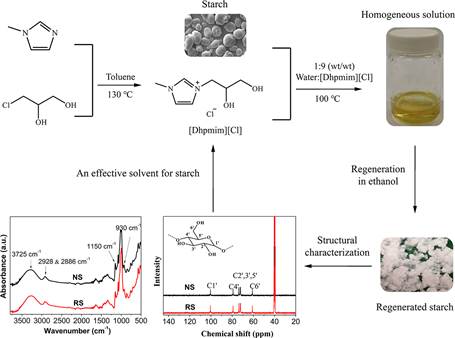Under the growing global focus on nutritional health and sustainable development, natural polysaccharides have emerged as renewable biomaterials with significant industrial potential. A research team led by Prof. He Zhendan, dean of College of Pharmacy at Shenzhen Technology University (SZTU), made breakthroughs in starch-lipid molecular assembly, multiscale structural regulation of complexes, and novel solvent systems for starch dissolution. These findings, published in top-tier journals including Carbohydrate Polymers (IF: 10.7), Food Chemistry (IF: 8.5), and International Journal of Biological Macromolecules (IF: 7.7), provide critical insights for designing health-oriented foods and drug delivery systems.
Tailoring starch-lipid complexes for nutrition
By studying how amylose content and fatty acid chain lengths influence starch-lipid complex behavior during microwave postprocessing, the team revealed that higher amylose content and longer fatty acid chains enhance structural stability and slow down digestion. These insights enable precise design of low-glycemic-index foods and targeted drug delivery systems.

(a) 13C CP/MAS NMR spectra of native and M-HMT-processed starch-PA complexes; (b) X-ray diffractograms of native and M-HMT-processed starch-PA complexes; (c) Schematic representation of the reassembly behaviors of starch-PA complexes with various amylose content during M-HMT. [Photo/https://doi.org/10.1016/j.carbpol.2025.123530]
Green solvent for starch-based materials
The team developed a hydroxyl-functionalized ionic liquid ([Dhpmim][Cl]) that efficiently dissolves starch (9.28 wt% solubility). The results are expected to guide the application of hydroxyl-functionalized ILs in starch dissolution, the development of new solvent for starch modification, and the design of starch-based materials.

Graphical abstract of the study [Photo/https://doi.org/10.1016/j.ijbiomac.2024.130775]
SZTU has achieved remarkable progress in the field of natural polysaccharide nutrition and materials. This breakthrough not only highlights the university’s strong research capabilities but also opens new avenues for interdisciplinary innovation. Looking ahead, the university is committed to advancing scientific research across various fields, fostering a culture of innovation and collaboration. By continuously improving research facilities and creating a supportive academic environment, SZTU aims to provide students and researchers with state-of-the-art research platforms. This will enable them to engage in cutting-edge projects and contribute to the global scientific community.
Drafted by Daisy(姚琦)/ International Cooperation and Exchanges Department
Revised by Brian(郑斌)/ International Cooperation and Exchanges Department
Edited by Brian(郑斌)/ International Cooperation and Exchanges Department
